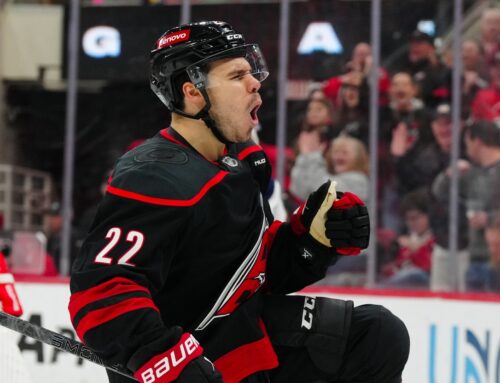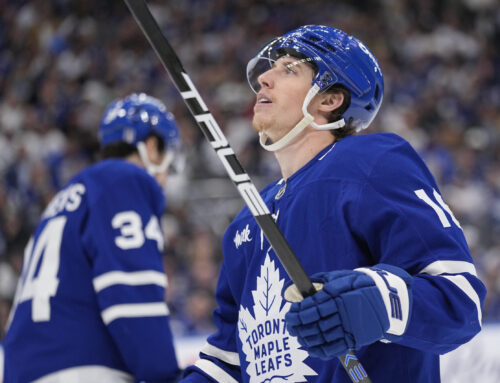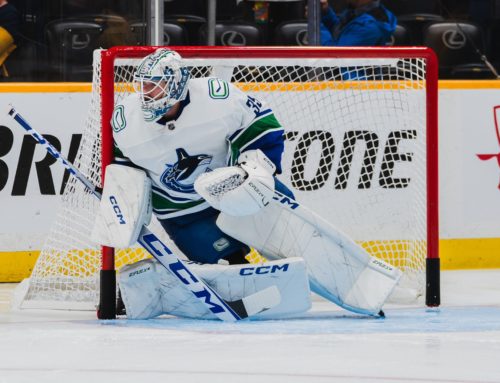For much of the offseason, I and others have been musing about how Tampa Bay was going to get under the cap. They are two million over the cap as it is, with Anthony Cirelli and Erik Cernak both to sign. We got a few details on the situation Monday, and it's not good news:
TB’s cap issues may be solved by LTIR. There is word Nikita Kucherov is battling an injury that may keep him out awhile. No comment from team/agent, so details are sketchy — but clarity expected this week. If unable to play (unfortunately), it will clear room for the Lightning.
— Elliotte Friedman (@FriedgeHNIC) December 21, 2020
That could help Tampa in the short-term, and as long as everyone else is healthy, they probably don't need him to make the playoffs. With that said, they do need him to make another Cup run so if this is a real long-term thing, it is very bad news for them and for fantasy hockey managers. This could be a revitalization of Tyler Johnson's fantasy value, though.
*
In the ‘Good News’ category, Flyers coach Alain Vigneault said that Oskar Lindblom should be good to go for the start of the season, which is wonderful to hear.
*
The Wild signed The Hamburglar a week or so ago when it was announced that Alex Stalock may have an injury. Though we don’t have a timeline, GM Bill Guerin said that they hope to have him back at some point this season, which sounds like this will be a long-term injury. That means likely backup duties for Kaapo Kahkonen.
*
Ken Holland announced Oscar Klefbom will miss the 2021 season due to injury. This isn’t wholly unexpected as he had been dealing with a shoulder problem for a while. He has struggled with injuries most of his career and the latest shoulder problem will see him miss the entire year. It is an unfortunate setback for a guy who had really become an anchor on that blue line.
This locks Barrie into the PP1 role, barring injury or catastrophe. Not that I think Klefbom was a huge impediment but he did take the minutes on a very successful PP unit last year. It should mean more even-strength minutes for both Bear and Nurse, which is great news for the latter because he is a peripherals machine in multi-cat leagues.
*
The NHL season is on the horizon. In his Ramblings yesterday, Dobber discussed all the pertinent details. Those include dates for the start/end of the season as well as the trade deadline, the entry draft, expansion draft, and a whole lot more. It is very thorough so for a detailed breakdown of what we know for right now, give it a gander.
I do want to offer a few opinions on this.
First, there isn't much that can be done about the imbalance between divisions – hey we're still in the midst of a pandemic! – and I hope there isn't complaining about that. There are imbalances every year:
- The Canadiens missed the playoffs in 2019 despite having 96 points, more than three playoff teams in the West.
- The year before, Florida had more points than Colorado, but missed the playoffs.
- In 2017, there were nine teams that finished with at least 100 points, and four of them were in the Metro.
- In 2016, there were 10 teams that finished with at least 100 points, and four of them were in the Metro.
Yes, it may not be fair, but it's also infrequently fair, so let's just move past that.
When it comes to the imbalance, I mused on Twitter recently that Buffalo kind of has some bad luck. They added Eric Staal and Taylor Hall in the offseason, and that gives them a legitimate second scoring line for the first time in several years. Unfortunately, they're now in a division with Boston, the Islanders, the Rangers, Philly, Pittsburgh, and Washington. Five of those teams were legitimate playoff teams last year and a sixth – the Rangers – are one of the up-and-coming teams in the league. With only four teams making it out of each division, the Sabres seriously have their work cut out.
For that reason, when we talk about how "tough" a division is, we need to be more precise about what we mean. By my eyes, the East Division is the "toughest" because the Devils are probably the only bad team in there and in a normal year, the other seven teams may have all made the postseason. At the same time, the West division has St. Louis, Colorado, and Vegas, three of maybe the five best teams in the league (when healthy). In that sense, it may be tougher for a team to get out of the divisional playoffs in the West, but it may be tougher just to get to the postseason in the East. Does that make sense?
To illustrate what I mean, here is a visual representation of expected points by division based off WAR projections:
Standings projections for the now official 2020-21 NHL Divisions
(Based on the WAR Roster Builder) pic.twitter.com/RWIvWyXD4T
— JFresh (@JFreshHockey) December 20, 2020
Notice how the Sabres are projected last but no team in the East is projected for fewer than 55 points. Two divisions have two teams with lower projections and one with one. However, we'll also notice that the West is the only division with two teams projected for more than 70 points. That is what I mean by being more precise about "toughest" division.
Like many others, I'm expecting the Matthews' and McDavid's of the world to shred the Canadian Division. For his career, for example, Matthews has averaged 50 goals/82 games against Canadian teams, and that includes zero goals in seven games on 24 shots against Calgary. Yes, the teams have changed over the years but there are a lot of average-to-poor defensive teams in Canada. It will be a feast. (One thing I wonder about is familiarity; playing each other 9-10 times in a few months is a lot. It may lead to penalties/misconducts, which could take key players off the ice, but may lead to more PP time. It is an interesting dichotomy.)
Dobber brings up the new rule about rookies needing to play just seven games to burn an ELC year, as opposed to 10 in normal seasons. I think we see a lot more rookies than normal playing 5-6 games, only because when the NHL returns, junior teams in the OHL and WHL will be on pause. There is not much sense having a prospect leave camp on January 10th and sit around for three weeks waiting to see if their junior teams start back up. I bet we see a lot of them start the year with their team and then the NHL franchise will play it by ear to see when/if the junior leagues restart. That could throw a wrench in fantasy leagues for the first couple weeks as lineups are constantly in flux, or even longer if more rookies stick around.
Because I play a lot of DFS, my mind wanders to the day-to-day operations of the NHL. The summer was a complete disaster with no media around. We didn't know who was playing, what the lineups were, any injuries etc. Remember "unfit to play"? What a time to be alive.
With taxi squads and, I'm assuming, limited practices with teams playing every other day, I worry about the day-to-day stuff from practices/morning skates. Not only because we've seen numerous COVID issues pop up in every league that hasn't returned with a bubble (NBA TBD), but because coaches may not be incentivized to share. If they're not forced to, they won't.
What about rest? We have seen the chatter about goalies on back-to-backs but what if teams have options they can turn to from their own practice squad? It could mean some games off for middle-of-the-roster players, or even stars later in the year once teams wrap up a playoff spot, which is a problem in deeper week-to-week leagues.
Home-ice advantage? What if San Jose, Toronto, and Vancouver are all playing in new locales? What if there are local shutdowns during the year that forces teams to a neutral ice site? Well, home teams scored 2.57 goals per game in the RTP playoffs, while the away teams scored 2.89 per game. That is a huge gap. It is too small a sample to draw solid conclusions but it is something worth thinking about. (For the record, it was found that through nine weeks of the NFL regular season, home-field advantage basically did not exist. For posterity, home-field advantage did exist in the MLB’s shortened 60-game season. As with the NHL RTP and the NFL, we’re still working with small samples all around.)
Those are some things worth thinking about as the season barrels closer
*
I was playing around with the expansion draft tool at Cap Friendly and noticed something: the Avalanche are going to lose a real good defenceman in the expansion draft. Remember that teams can either protect 7-3-1 or eight skaters and a goalie. Assuming they re-sign Gabriel Landeskog, they will be keeping Rantanen, MacKinnon, Landeskog, and Kadri up front at a minimum. That means they can keep no more than four defencemen, should they go the eight-skater route. They have to keep Erik Johnson because he has a no-move clause, and I assume they'll be keeping both Cale Makar and Sam Girard. That leaves one defenceman to protect with Ryan Graves and Devon Toews still needing protection. It seems one will be suiting up for the Kraken in 2021-22.





 CAR
CAR WPG
WPG ANA
ANA PHI
PHI BUF
BUF CHI
CHI L.A
L.A COL
COL T.B
T.B
 MTL
MTL
